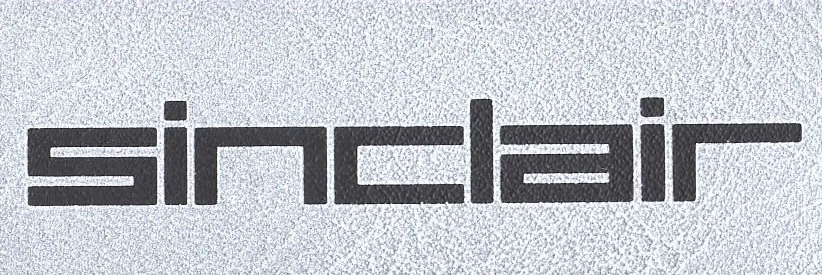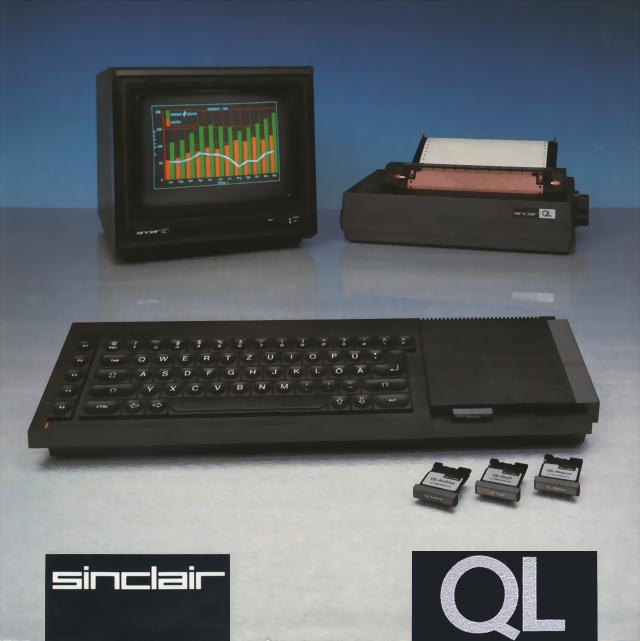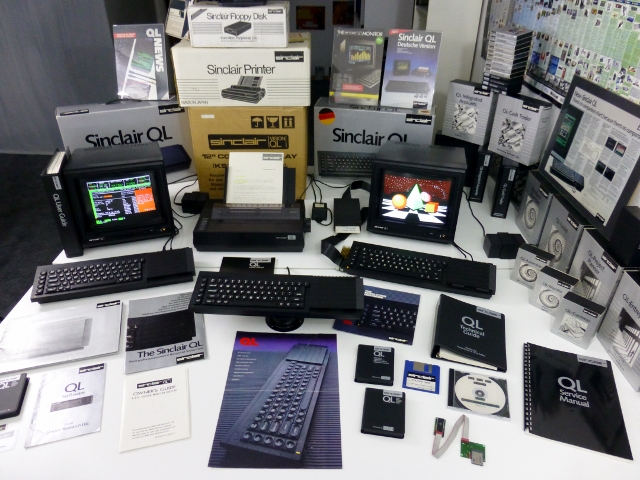Home |
QL what? |
Repository |
![]() Pages |
Anniversaries |
Chronology (1981 until today) |
Linus Torvalds QL contributions |
Pages |
Anniversaries |
Chronology (1981 until today) |
Linus Torvalds QL contributions |
![]() Machine build standards |
Machine build standards |
![]() Preservation Project (SQPP) |
Preservation Project (SQPP) |
![]() Picture Gallery (SQPG) |
QL versus JAGUAR |
Picture Gallery (SQPG) |
QL versus JAGUAR |
![]() QLvsJAGUAR Video Channel on YouTube |
QLvsJAGUAR Video Channel on YouTube |
![]() QLvsJAGUAR Blog posts |
About Urs König
QLvsJAGUAR Blog posts |
About Urs König

|
|

|

The Sinclair QL Professional Computer was presented on Jan 12th 1984 which is 12 days before Steve Jobs presented the Apple Macintosh. Inspired by the powerful workstations at Palo Alto, the QL was conceived in summer 1982 under the codename ZX83 and was developed in 18 months. Targeting the (semi-)professional and educational market, the QL offered a very efficient and expandable operating system with preemptive multitasking and device independence, an outstanding BASIC, a coloured high-resolution bitmapped display supporting windowing and a powerful and easy to use bundled Office suite with data exchange.

Backed with the success of the million-sellers ZX81 and ZX Spectrum, Sinclair Research Limited put everything on one card and established a complete ecosystem for the QL. Hardware, Software, Services. Unfortunately the thing never really took off and the world is now dominated by Intel based PCs and ARM based portable devices. The QL is a very good example of an innovative, stylish, powerful and overall underestimated product and ecosystem. On one hand it failed in the market but on the other hand it influenced many developments which ended in many of today’s computing devices. And, many engineers and key users involved did quite a career afterwards, backed with their experience made with the QL.
| Object: | Professional Computer |
| Brand: | Sinclair |
| Name: | QL |
| Codename: | ZX-83 |
| Developer: | Sinclair Research Ltd, Cambridge, UK  |
| Core team engineers: | David Karlin (HW), Tony Tebby (OS), Jan Jones (BASIC), Rick Dickinson (Industrial Design) |
| Additional engineers: | John Mathieson (HW), Jonathan Oakley (HW), Richard Miller (HW), Aaron Turner (IPC firmware) |
| Offspring: | In 1983 John Mathieson did a hard disk interface for the QL which was demoed at the launch but never went any further. In 1985 at Micro Peripherals Ltd Richard Miller developed a floppy disk interface for the QL which was later sold under the Sinclair brand name. Richard Miller joined Sinclair Research in 1985 and developed the ASIC of Sinclair's portable marketed as Cambridge Computers Z88. They both later developed the ATARI Jaguar and the VM Labs NUON technology. |
| Intended market introduction: | Autumn 1983, to generate sales for Christmas 1983. Target was missed. |
| 1st public announcement: | By Clive Sinclair on January 12th 1984 at the launch press conference in London. Delivery of first shipments promissed for the end of February 1984. Sinclair QL Launch Press Conference 12.01.1984 in London. (Video length 9m56s) |
| 1st US press conference: | By Nigel Searle in May 1984 at the Boston Computer Society (BCS) General Meeting in the New England Life Hall in Boston. Sinclair QL Presentation May 1984 in Boston. (Video length 1h55m) |
| Availability: | Mail order started at launch press conference on January 12th 1984, first shipments at the very end of April 1984. Retail in autumn 1984. |
| Manufacturer: | Thorn EMI Datatech, UK (D models); SAMSUNG, Korea (S models, kind of a QL MK2) |
| Earliest known unit still existing: | Machine with no S/N, assembled ca. January/February 1984, equipped with a ZX-83 1983 ISS.2 PCB made 8350 |
| 1st "mass" production run: | April 1984 (THORN EMI Datatech, Feltham, UK), D04 series |
| Last "mass" production run: | May 1986, last known serial number is SG18-010800 (SAMSUNG made German edition) |
| Production figures: | About 150'000 units (includes about 6'000 US and 11'000 German editions both made by SAMSUNG), manufactured in 26 months |
| Architecture: | 8/32-bit |
| Processor(s): | CPU MC68008 (7.5 MHz), IPC I8049 (11 Mhz) with 2KB custom firmware °1 |
| Custom chips: | ZX8301 (Video, BUS, DRAM) and ZX8302 (Peripherals) |
| RAM: | 128KB/640KB °2 |
| ROM: | 48KB/64KB °3 (OS with device drivers and library of vectored routines, SuperBASIC interpreter) |
| Video resolution (pixels): | 256x256 and 512x256 (set using MODE 0 or MODE 8) |
| Text resolution (characters): | 85x25 (max. depending on video resolution, set using CSIZE 0,0 to 3,1) |
| Colours: | 4 at 512 pixels, 8 at 256 pixels (255 stipples of 2 colours and a pattern in a 2x2 pixel block) |
| Music: | Beeper |
| BOOT time: | 3.5 seconds (off the shelf PAL machine with JM ROM) |
| Physicals: | 472mm (w) x 138mm (d) x 46mm (h), 1388g (D models, S models weigh a bit more due to keyboard backplate made off steel instead of aluminum and due to shielding) |
| Power supply: | 9V DC at 1.8A,15.6V AC at 0.2A |
| Key colours in CI/CD: | Black, Silver, White |
| Marketing slogan: | Sheer professional power in the special Sinclair style |
| Community slogan: | QL forever! |
| What blew me away: | BASIC language, 32-bit multitasking OS, visual appearance (black) |
| Got my 1st personal unit: | On January 20th 1986, bought in the post Christmas 1985 sales at a consumer electronics retailer in Berne |
| Animated logo: |  |
| THE collection: |  as appearing in the movie "QL is 30" - 30th anniversary 2014 |
| The Story: |
Sinclair QL Story |
| Wiki: | Wikipedia Community Wiki |
°1 - Expansion cards with MC68000/12, MC68000/16 or MC68020/24 CPU were available in the early 1990s.
°2 - Expansion cards with 768KB, 2MB (with MC68000/16 CPU) and 4MB RAM (with MC68020/24 CPU) were available in the late 1980s and early 1990s.
°3 - The original specification was 32KB ROM for the OS and BASIC. During development OS and BASIC became bigger as planned. Production machines had 48KB ROM which resulted in the expansion ROM limited to 16KB.
Site produced (p) and copyright (c): 2013-2018, Urs König
Last Updated: June 23rd 2018
Return to top of this page | Return to home page